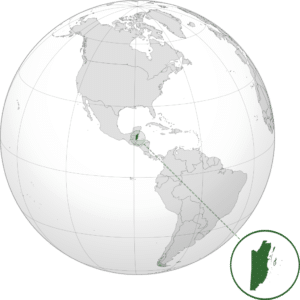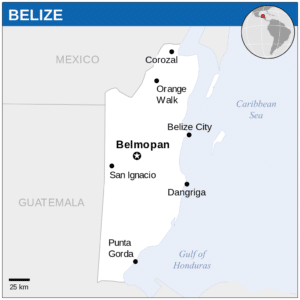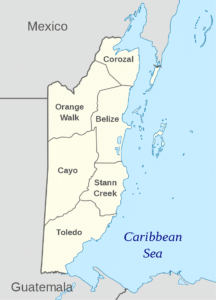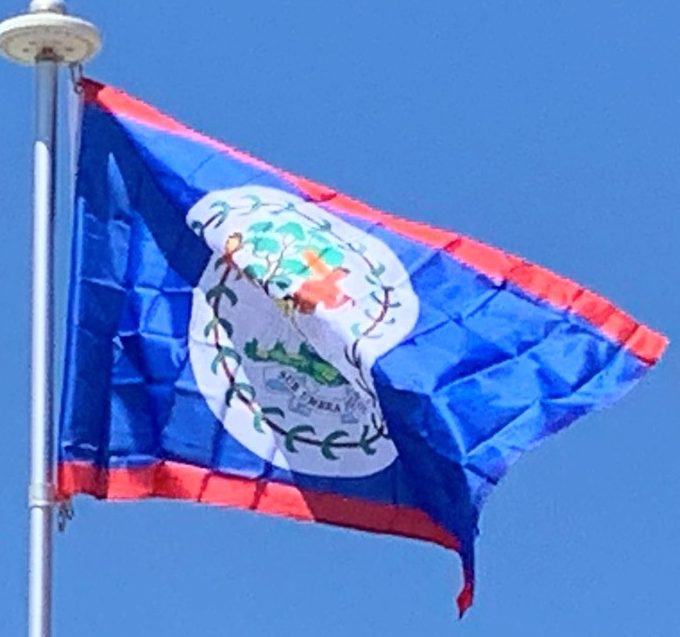Introduction:
Belize is an independent and sovereign country located on the north eastern coast of Central America. Belize is bordered on the northwest by Mexico, on the east by the Caribbean Sea, and on the south and west by Guatemala. It has an area of 8,867 square miles and a population of 387,879 (2017). Its mainland is about 180 miles long and 68 miles wide. It has the lowest population and population density in Central America.

The Maya Civilization spread into the area of Belize between 1500 B.C. and 300 A.D. and flourished until about 1200. European exploration campaigns began in 1502 when Christopher Columbus sailed along the Gulf of Honduras. European settlement was begun by English settlers in 1638. This period was also marked by Spain and Britain both laying claim to the land until Britain defeated the Spanish in the Battle of St. George’s Caye (1798). It became a British colony in 1840, known as British Honduras, and a Crown colony in 1862. Independence was achieved from the United Kingdom on 21 September 1981.
Belize has a very diverse society that is composed of many cultures and languages that reflect its rich history. English is the official language of Belize, while Belizean Creole is the most widely spoken national language, being the native language of over a third of the population. Over half the population is multilingual, with Spanish being the second most common spoken language. It is known for its September Celebrations, its extensive barrier reef coral reefs and punta music.

Belize’s abundance of terrestrial and marine species and its diversity of ecosystems give it a key place in the globally significant Mesoamerican Biological Corridor. It is considered a Central American and Caribbean nation with strong ties to both the American and Caribbean regions. It is a member of the Caribbean Community (CARICOM), the Community of Latin American and Caribbean States (CELAC), and the Central American Integration System (SICA), the only country to hold full membership in all three regional organisations. Belize is a Commonwealth realm, with Queen Elizabeth II as its monarch and head of state.
Etymology:
The earliest known record of the name “Belize” appears in the journal of the Dominican priest Fray José Delgado, dating to 1677. Delgado recorded the names of three major rivers that he crossed while travelling north along the Caribbean coast: Rio Soyte, Rio Xibum and Rio Balis.

The names of these waterways, which correspond to the Sittee River, Sibun River, and Belize River, were provided to Delgado by his translator. It has been proposed that Delgado’s “Balis” was actually the Mayan word belix (or beliz), meaning “muddy-watered”. More recently, it has been proposed that the name comes from the Mayan phrase “bel Itza”, meaning “the road to Itza”.
History:
Maya Civilization:
The Maya civilization spread across what is now Belize around 1500 BC, and flourished there until about AD 900. The recorded history of the middle and southern regions is dominated by Caracol, an urban political center that may have supported over 140,000 people. North of the Maya Mountains, the most important political center was Lamanai. In the late Classic Era of Maya civilization (600–1000 AD), as many as one million people may have lived in the area that is now Belize.
